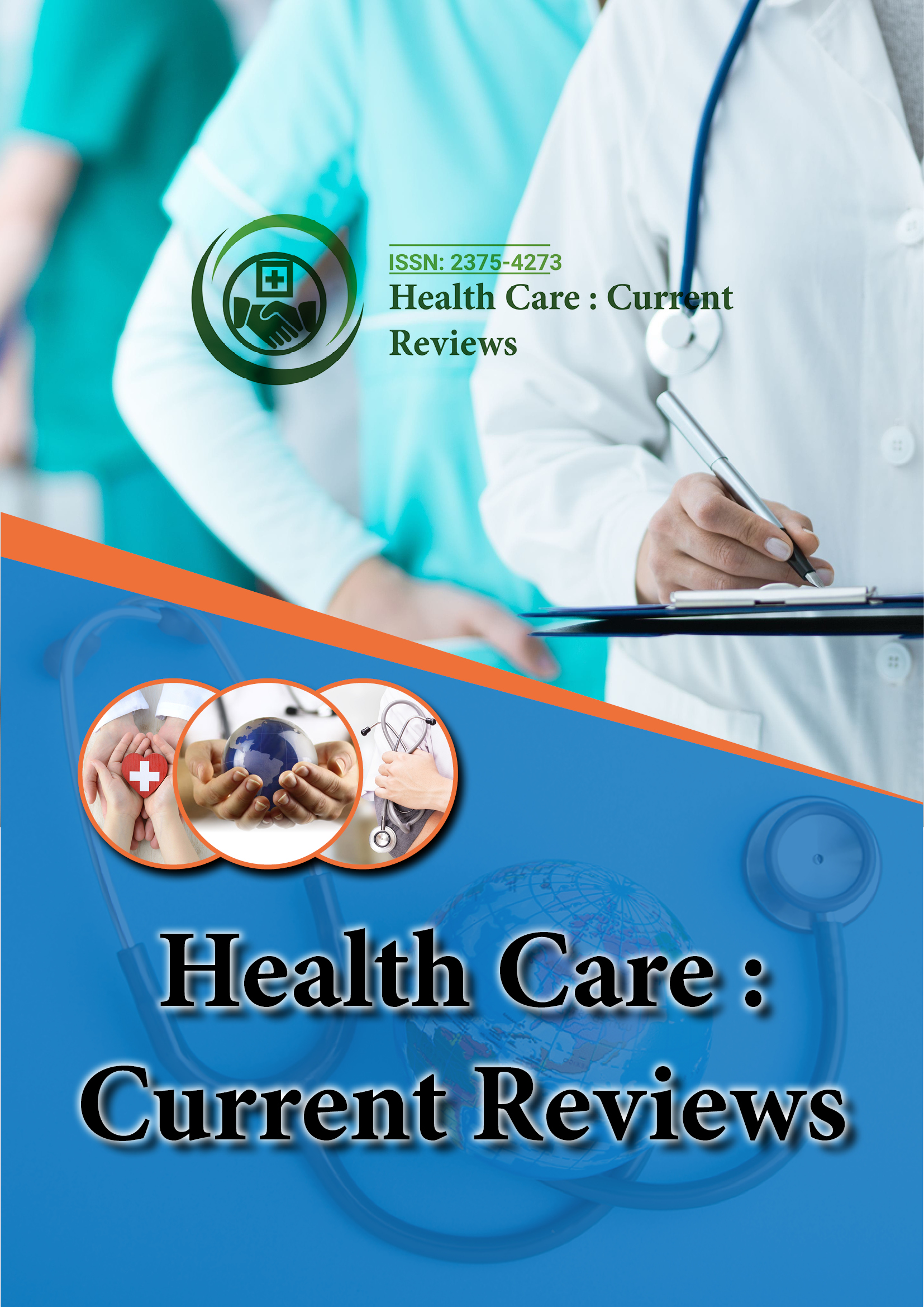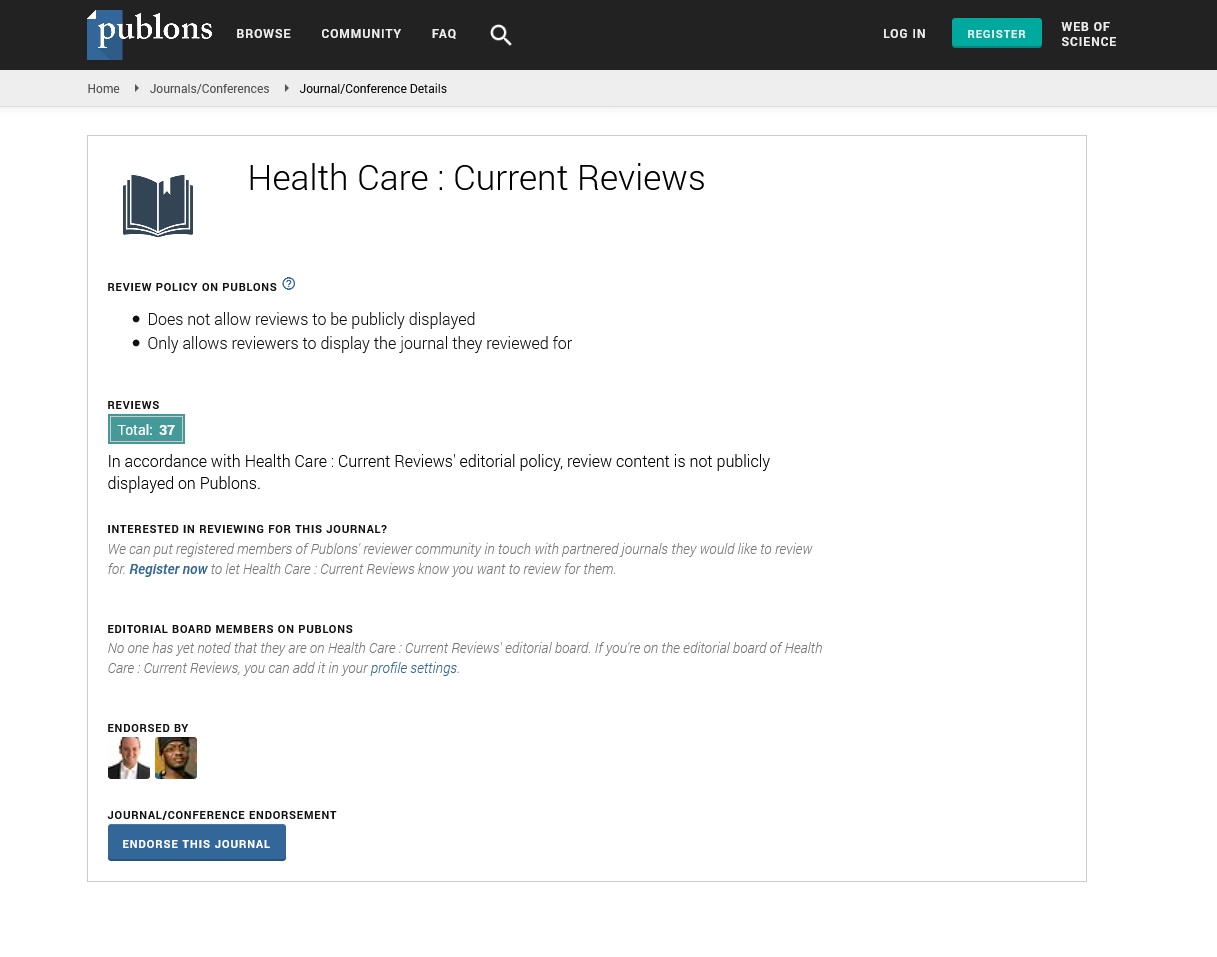Indexed In
- Open J Gate
- Academic Keys
- RefSeek
- Hamdard University
- EBSCO A-Z
- Publons
- Geneva Foundation for Medical Education and Research
- Google Scholar
Useful Links
Share This Page
Journal Flyer

Open Access Journals
- Agri and Aquaculture
- Biochemistry
- Bioinformatics & Systems Biology
- Business & Management
- Chemistry
- Clinical Sciences
- Engineering
- Food & Nutrition
- General Science
- Genetics & Molecular Biology
- Immunology & Microbiology
- Medical Sciences
- Neuroscience & Psychology
- Nursing & Health Care
- Pharmaceutical Sciences
Opinion Article - (2025) Volume 13, Issue 1
The Role of Healthcare Workers in a Post-COVID World: Challenges and Opportunities
Selin Kaya*Received: 26-Feb-2025, Manuscript No. HCCR-25-28735; Editor assigned: 28-Feb-2025, Pre QC No. HCCR-25-28735 (PQ); Reviewed: 14-Mar-2025, QC No. HCCR-25-28735; Revised: 21-Mar-2025, Manuscript No. HCCR-25-28735 (R); Published: 28-Mar-2025, DOI: 10.35248/2375-4273.25.13.427
Description
The global health crisis brought on by COVID-19 placed healthcare workers in an intense spotlight. Doctors, nurses, technicians and support staff were thrust into long hours, emotionally taxing decisions and unpredictable conditions. As the world gradually moves beyond the pandemic's immediate impact, the role of these professionals continues to evolve. The experiences of the past few years have reshaped expectations, work environments and the way care is delivered. While some of the changes have created new difficulties, others present avenues for meaningful development.
One of the most immediate challenges for healthcare professionals in this new context is fatigue. Many worked through back-to-back emergencies, often with limited staff and resources. The stress from long shifts, high-risk exposure and witnessing the loss of lives has left a lasting impact. Burnout has become more common, leading some to leave the profession or reduce their hours. The emotional toll is not limited to physicians or nurses; cleaners, administrative staff and ambulance crews have also faced pressure. Mental health support, once considered optional in many workplaces, is now essential for long-term staff well-being.
Workforce shortages remain a pressing concern. Hospitals and clinics in many regions are operating with fewer hands than they need. Recruitment of new staff is slow in some areas and retention of experienced workers has become harder. To meet demand, healthcare systems are looking at new ways to train professionals more efficiently while keeping standards high. Remote education, skill-sharing and flexible career pathways are among the methods being explored to attract and maintain a capable workforce.
Another shift involves the use of digital tools. Remote consultations, once rare, have become part of regular practice. While these methods offer convenience for both patients and staff, they also come with challenges. Not all patients have the technology or skills to access virtual care and some health concerns require in-person evaluation. Healthcare workers must balance new digital options with traditional methods, ensuring that care remains effective and inclusive. Training is needed to help staff manage these platforms, protect patient data and communicate clearly through screens.
Public expectations have also changed. People are now more aware of how healthcare systems operate and may demand quicker service, better communication and more transparency. This adds pressure on staff who are already stretched thin. Professionals are being asked to handle not just medical tasks, but also to respond to questions about health policy, vaccines and public safety. Navigating these expectations takes both time and skill and requires support from leadership to ensure that front-line staff are not overwhelmed.
The crisis also brought attention to the importance of teamwork. In many hospitals, departments that once worked separately began to collaborate more closely. Staff were asked to take on new roles, support unfamiliar procedures and adjust to daily changes in guidance. While this flexibility helped save lives during the peak of the crisis, it also showed the value of building work environments that encourage cooperation across roles and specializations. Going forward, healthcare organizations are likely to continue building on these collaborative efforts.
There is also increased recognition of the importance of equity in healthcare. COVID-19 showed how access to care can differ depending on factors such as income, race, or location. Healthcare professionals now play a larger role in identifying and addressing these differences. Whether through community outreach, policy input, or adjustments to clinic procedures, staff are helping make care more fair and accessible. Their daily observations and experience put them in a strong position to guide improvements.
Learning from the past few years, healthcare systems are also giving more attention to disaster preparation. Staff are being trained to respond to future large-scale events, including pandemics, natural disasters and mass casualty incidents. Protocols are being updated and communication tools are being refined. Professionals are expected to adapt quickly and work across various roles when situations demand it. Building confidence in these areas can help reduce stress and confusion during emergencies.
In this new phase, healthcare workers continue to serve as vital contributors to both recovery and progress. The environment they operate in has changed and with that comes the need for adjustments in training, support and expectations. Recognizing their experiences and challenges is essential to creating systems that not only function well, but also value and protect those who make care possible. The way forward involves learning from the past while being open to change, innovation and collaboration.
Citation: Kaya S (2025). The Role of Healthcare Workers in a Post-COVID World: Challenges and Opportunities. Health Care Curr Rev. 13:427.
Copyright: © 2025 Kaya S. This is an open access article distributed under the terms of the Creative Commons Attribution License, which permits unrestricted use, distribution and reproduction in any medium, provided the original author and source are credited.

